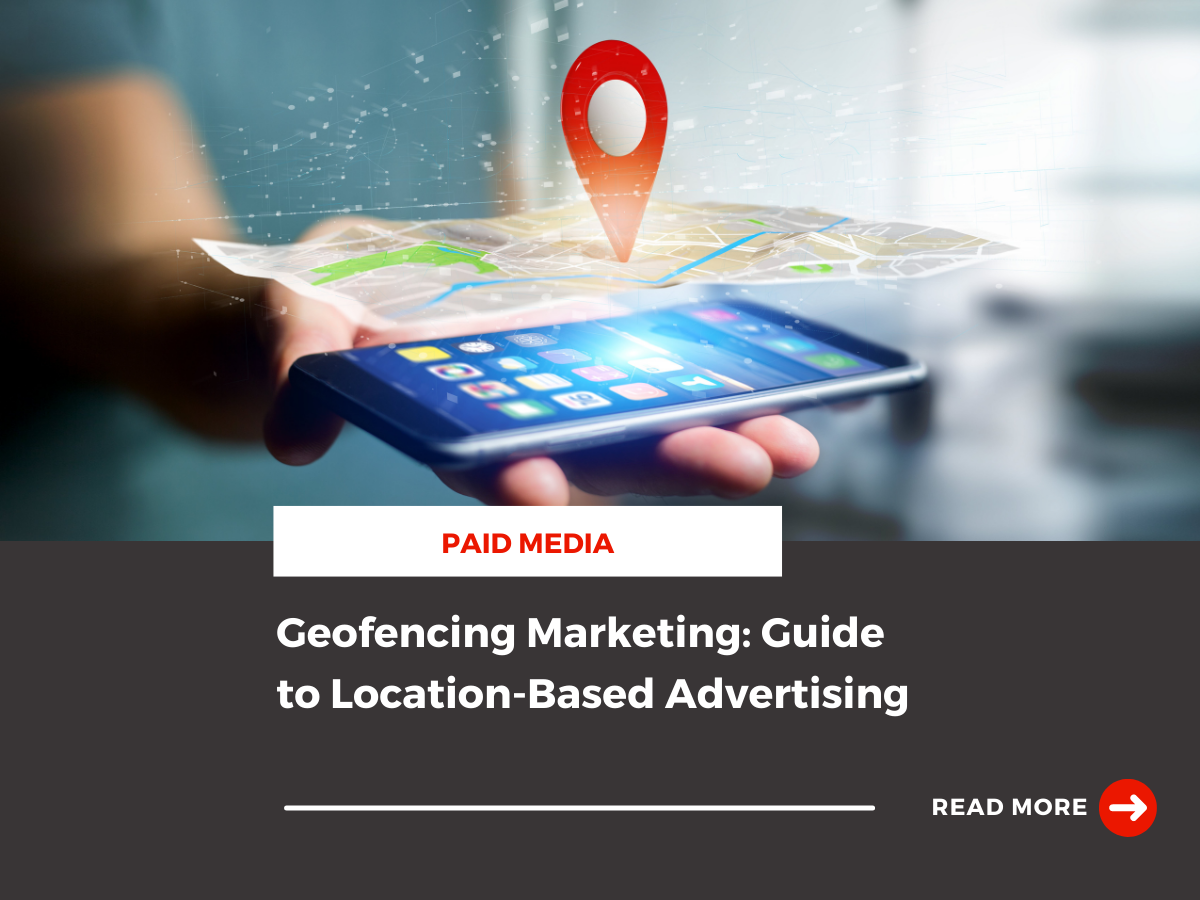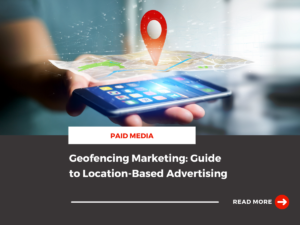Let’s say you live in Orange County, California and you grab your phone to check the weather this weekend. When you do, you get an advertisement for a new restaurant in town you’ve never heard of before. This entices you to learn more or even stop by for lunch on the weekend. What you might not be aware of at that moment is that the ad was targeted toward you because of your location. This is what we like to call geofencing marketing.
Geofencing is a strategic marketing tactic that helps your brand get in front of an audience in a particular location. When done correctly, geofencing advertising can yield high results and help you get your business recognition in a specific geographic area.
Location-based mobile advertising isn’t for everyone. However, the companies that can benefit tend to see a high return on investment.
The numbers don’t lie. Studies show that 53% of shoppers visit a retailer after receiving a location-based message, and geofencing mobile ads double the click-through rate of other advertising solutions.
Geofencing isn’t new by any means. However, as the world around us continues to go digital and the number of smartphone users increases, the demand for geofencing marketing continues to grow.
We put together a guide to help your brand stay in the know with this marketing solution so you can see if geofencing advertising is right for you.
Here’s everything you need to know:
What is Geofencing Marketing?
To put it simply: Geofencing is location-based marketing where you start by drawing a virtual fence around a specific area. This fence is the virtual boundary where all your geofencing marketing campaigns will take place.
Geofencing marketing helps your brand connect with customers via mobile devices. It can help your marketing content stay top of mind so that when potential customers are in a specific location, they’ll know what company they can count on for products or services.
This is a strategic style of marketing that allows you to narrow down your audience to one specific location and provide them with custom promos or product offers they would benefit from.
Let’s say you want to run geofencing advertising only to individuals on the Upper East Side of New York City. You would draw your virtual fence around that portion of the city, and your ads will only be seen by individuals currently within the boundary. Individuals that move in and out of that location will also see your advertisement. Anyone outside of the virtual fence will not see your marketing campaigns.
This allows you to personalize your advertising strategy and provide sales and deals that the consumer is more likely to enjoy.
How Does Location Targeting With Geofencing Work?
To get started, you’ll want to think about your audience. Ask yourself, where does my customer spend most of their time? How can they benefit from my products or services?
For example, let’s look at how a business like Lyft benefits from geofencing. For the best ROI, they’ll want to target an audience that doesn’t have a car. The best way to do this is by drawing a fence around areas like airports, sports stadiums, event venues, or even a downtown area with tons of nightlife.
Now that we’ve drawn a fence around a few areas, we’ll need to consider the customer journey and how you want the advertisements to reach them. Some businesses benefit from geofencing google ads, and others benefit more from push notifications that come from apps.
When the consumer enters the fence, their mobile device locates them. The DSP receives the information from the consumer, and the ads appear on their mobile device.
So, when they get off the airplane or make their way to the parking lot, Lyft will be one step ahead of its competitors. They’ll send a push notification to the consumer saying something like, “Need a lift? Here’s $5 off your next ride.”
At that moment, the consumer might decide to go with Lyft over other rideshare options available because the brand was top of mind or provides a promotion they couldn’t pass up.
How Much Does Geofencing Cost?
Geofencing can cost anywhere from $4 to $15 CPM for ads to run on mobile devices or computers. However, there’s a lot to consider, including impression volume and the unique targeting features.
Another factor that impacts price is the geofence size and how many geofences you have running at one time. The larger the fence, the lower your CPM will be since your audience won’t be as narrowly focused, and you’ll have an opportunity to connect with more individuals.
You’ll also need to consider ad spending and management fees associated with your geofencing advertisements. Working with an advertising specialist or a marketing agency can help you increase your ROI and get the most out of your geofencing advertisements.
How Geofencing Works With SEO
With a buttoned-up geofencing marketing strategy, you’re able to reach top-of-the-funnel consumers. These individuals have not yet engaged with your company but have shown intent or need for your services.
For example, let’s say you own a car dealership and you’re utilizing a geofencing strategy to target a community with an abundance of car shoppers. Within the geofencing, you also include local competitors and target these users with advertisements that would appeal to them.
Even if they don’t act on your ad at that moment, your brand is still top of mind. That means if they search for “car dealerships in my area” and your brand comes out ahead of the rest in the search results, they’re more likely to convert and choose your web page over your competitors.
Every digital interaction they have with your company works together in some big or small way. When you prioritize SEO and geofencing marketing, you’ll have the leverage you need to turn prospects into paying customers who know and love your brand.
Impact of Geofencing on Business
We’ll be the first to tell you: Geofencing marketing isn’t for everyone. Only a small portion of businesses can benefit from having their audience narrowed down to a specific location. These brands are typically small, brick-and-mortar businesses within hospitality, retail, and healthcare. Some tech companies and app-based services may also benefit when done correctly.
However, there are some situations where a business may want to choose to run a small geofencing marketing campaign over others. These campaigns provide a competitive advantage unlike any other campaign out there. They allow you to develop a personalized experience for your audience, where both you and the consumer benefit.
If you’re ready to explore geofencing advertising for yourself, you’ve come to the right place. Our team of experts can help you build a strategy for your location-based marketing and help you see the results you’re looking for. Contact us today to learn more.




